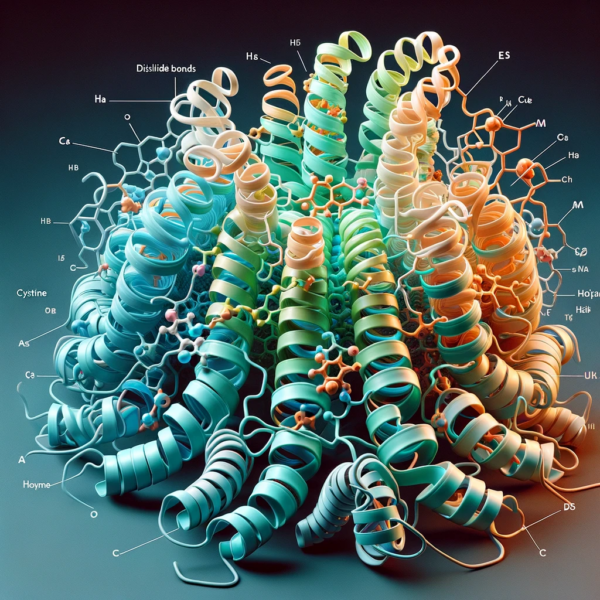Everyone’s hair is unique, and its rate of growth, size, and shape can vary. However, we can note some general differences in hair structure among people from different ethnic groups.
Asian hair tends to be the thickest and coarsest when compared to Caucasian and African American hair. It’s almost always straight, with a circular cross-section. However, the number of hair follicles on the scalp is usually less than in Caucasians. This density also tends to be lower in African Americans. On average, Asians might have around 90,000 to 120,000 scalp hair follicles.
Caucasian hair is quite diverse, ranging from straight to wavy or curly. The fiber can be either circular or oval in cross-section and is generally thinner than Asian hair. The density of hair follicles varies, often correlating with hair color. Redheads usually have the least dense hair, blondes have the most, and brunettes fall somewhere in the middle. The range of hair density on the scalp is about 100,000 to 150,000 scalp hair follicles.
African / African American hair often has a tightly coiled or spiral shape. The cross-section of the hair is typically elliptical or even flat in some cases, making the hair strong and rigid in one direction but flexible in the other. This leads to natural flexing and coiling along the hair length but minimal side-to-side coiling.
Different hair types are produced by different hair follicles. Large, straight follicles with a circular cross-section produce thick straight hair, while curly, flat follicles produce curly, elliptical, or ribbon-shaped hair. African Americans often have curly, flattened hair follicles that result in highly coiled hair. Some studies suggest these follicles are shaped like spirals or springs inside the skin. The shape of the hair follicle acts like a mold for hair creation. New cells added at the root of the hair follicle adopt its shape, forming the hair fiber’s structure as they harden and keratinize.
People with tightly coiled hair often notice faster deterioration in hair quality, which can be due to the coiling stressing the outer hair cuticle, leading to flaking and damage. The cuticle on the outside of a coil is thin and easily damaged, while the inside of the coil is thicker and less prone to damage. There may also be racial differences in the chemical composition of hair that affects the rate of deterioration in hair quality, but recent studies suggest these differences are minimal.
Despite producing more oils and sebum, African American hair tends to be dry because the coiled shape hinders even oil distribution. As a result, additional hair oils might be needed to keep the hair flexible. This hair type can also be difficult to brush and comb, so using oils can reduce friction and make hair more manageable. Specific shampoos and oils formulated for African American hair often contain moisture-adding ingredients and mild cleansers, and avoid harsh ingredients like sodium lauryl sulfate.
Bibliography
11711645 {11711645:VNE72JXH},{11711645:2I6S8JPW},{11711645:VGBC3SJK},{11711645:EG3FQ7NK},{11711645:G5QQ8K3H},{11711645:NLMDEUIS},{11711645:BGQSNE2K} 1 vancouver 50 date asc 14 https://www.keratin.com/wp-content/plugins/zotpress/ %7B%22status%22%3A%22success%22%2C%22updateneeded%22%3Afalse%2C%22instance%22%3Afalse%2C%22meta%22%3A%7B%22request_last%22%3A0%2C%22request_next%22%3A0%2C%22used_cache%22%3Atrue%7D%2C%22data%22%3A%5B%7B%22key%22%3A%22BGQSNE2K%22%2C%22library%22%3A%7B%22id%22%3A11711645%7D%2C%22meta%22%3A%7B%22creatorSummary%22%3A%22Gold%20and%20Scriver%22%2C%22parsedDate%22%3A%221971-07%22%2C%22numChildren%22%3A0%7D%2C%22bib%22%3A%22%3Cdiv%20class%3D%5C%22csl-bib-body%5C%22%20style%3D%5C%22line-height%3A%201.35%3B%20%5C%22%3E%5Cn%20%20%3Cdiv%20class%3D%5C%22csl-entry%5C%22%20style%3D%5C%22clear%3A%20left%3B%20%5C%22%3E%5Cn%20%20%20%20%3Cdiv%20class%3D%5C%22csl-left-margin%5C%22%20style%3D%5C%22float%3A%20left%3B%20padding-right%3A%200.5em%3B%20text-align%3A%20right%3B%20width%3A%201em%3B%5C%22%3E1.%3C%5C%2Fdiv%3E%3Cdiv%20class%3D%5C%22csl-right-inline%5C%22%20style%3D%5C%22margin%3A%200%20.4em%200%201.5em%3B%5C%22%3EGold%20RJ%2C%20Scriver%20CG.%20The%20amino%20acid%20composition%20of%20hair%20from%20different%20racial%20origins.%20Clin%20Chim%20Acta.%201971%20Jul%3B33%282%29%3A465%26%23x2013%3B6.%3C%5C%2Fdiv%3E%5Cn%20%20%20%3C%5C%2Fdiv%3E%5Cn%3C%5C%2Fdiv%3E%22%2C%22data%22%3A%7B%22itemType%22%3A%22journalArticle%22%2C%22title%22%3A%22The%20amino%20acid%20composition%20of%20hair%20from%20different%20racial%20origins%22%2C%22creators%22%3A%5B%7B%22creatorType%22%3A%22author%22%2C%22firstName%22%3A%22R.%20J.%22%2C%22lastName%22%3A%22Gold%22%7D%2C%7B%22creatorType%22%3A%22author%22%2C%22firstName%22%3A%22C.%20G.%22%2C%22lastName%22%3A%22Scriver%22%7D%5D%2C%22abstractNote%22%3A%22%22%2C%22date%22%3A%221971-07%22%2C%22language%22%3A%22eng%22%2C%22DOI%22%3A%2210.1016%5C%2F0009-8981%2871%2990510-9%22%2C%22ISSN%22%3A%220009-8981%22%2C%22url%22%3A%22%22%2C%22collections%22%3A%5B%22KKCDH6CJ%22%5D%2C%22dateModified%22%3A%222023-05-14T20%3A54%3A11Z%22%7D%7D%2C%7B%22key%22%3A%22NLMDEUIS%22%2C%22library%22%3A%7B%22id%22%3A11711645%7D%2C%22meta%22%3A%7B%22creatorSummary%22%3A%22Hrdy%22%2C%22parsedDate%22%3A%221973-07%22%2C%22numChildren%22%3A0%7D%2C%22bib%22%3A%22%3Cdiv%20class%3D%5C%22csl-bib-body%5C%22%20style%3D%5C%22line-height%3A%201.35%3B%20%5C%22%3E%5Cn%20%20%3Cdiv%20class%3D%5C%22csl-entry%5C%22%20style%3D%5C%22clear%3A%20left%3B%20%5C%22%3E%5Cn%20%20%20%20%3Cdiv%20class%3D%5C%22csl-left-margin%5C%22%20style%3D%5C%22float%3A%20left%3B%20padding-right%3A%200.5em%3B%20text-align%3A%20right%3B%20width%3A%201em%3B%5C%22%3E1.%3C%5C%2Fdiv%3E%3Cdiv%20class%3D%5C%22csl-right-inline%5C%22%20style%3D%5C%22margin%3A%200%20.4em%200%201.5em%3B%5C%22%3EHrdy%20D.%20Quantitative%20hair%20form%20variation%20in%20seven%20populations.%20Am%20J%20Phys%20Anthropol.%201973%20Jul%3B39%281%29%3A7%26%23x2013%3B17.%3C%5C%2Fdiv%3E%5Cn%20%20%20%3C%5C%2Fdiv%3E%5Cn%3C%5C%2Fdiv%3E%22%2C%22data%22%3A%7B%22itemType%22%3A%22journalArticle%22%2C%22title%22%3A%22Quantitative%20hair%20form%20variation%20in%20seven%20populations%22%2C%22creators%22%3A%5B%7B%22creatorType%22%3A%22author%22%2C%22firstName%22%3A%22D.%22%2C%22lastName%22%3A%22Hrdy%22%7D%5D%2C%22abstractNote%22%3A%22%22%2C%22date%22%3A%221973-07%22%2C%22language%22%3A%22eng%22%2C%22DOI%22%3A%2210.1002%5C%2Fajpa.1330390103%22%2C%22ISSN%22%3A%220002-9483%22%2C%22url%22%3A%22%22%2C%22collections%22%3A%5B%22KKCDH6CJ%22%5D%2C%22dateModified%22%3A%222023-05-14T20%3A52%3A38Z%22%7D%7D%2C%7B%22key%22%3A%22G5QQ8K3H%22%2C%22library%22%3A%7B%22id%22%3A11711645%7D%2C%22meta%22%3A%7B%22creatorSummary%22%3A%22Sperling%22%2C%22parsedDate%22%3A%221999-06%22%2C%22numChildren%22%3A0%7D%2C%22bib%22%3A%22%3Cdiv%20class%3D%5C%22csl-bib-body%5C%22%20style%3D%5C%22line-height%3A%201.35%3B%20%5C%22%3E%5Cn%20%20%3Cdiv%20class%3D%5C%22csl-entry%5C%22%20style%3D%5C%22clear%3A%20left%3B%20%5C%22%3E%5Cn%20%20%20%20%3Cdiv%20class%3D%5C%22csl-left-margin%5C%22%20style%3D%5C%22float%3A%20left%3B%20padding-right%3A%200.5em%3B%20text-align%3A%20right%3B%20width%3A%201em%3B%5C%22%3E1.%3C%5C%2Fdiv%3E%3Cdiv%20class%3D%5C%22csl-right-inline%5C%22%20style%3D%5C%22margin%3A%200%20.4em%200%201.5em%3B%5C%22%3ESperling%20LC.%20Hair%20density%20in%20African%20Americans.%20Arch%20Dermatol.%201999%20Jun%3B135%286%29%3A656%26%23x2013%3B8.%3C%5C%2Fdiv%3E%5Cn%20%20%20%3C%5C%2Fdiv%3E%5Cn%3C%5C%2Fdiv%3E%22%2C%22data%22%3A%7B%22itemType%22%3A%22journalArticle%22%2C%22title%22%3A%22Hair%20density%20in%20African%20Americans%22%2C%22creators%22%3A%5B%7B%22creatorType%22%3A%22author%22%2C%22firstName%22%3A%22L.%20C.%22%2C%22lastName%22%3A%22Sperling%22%7D%5D%2C%22abstractNote%22%3A%22BACKGROUND%3A%20The%20meager%20data%20on%20normal%20hair%20density%20in%20humans%20have%20been%20gathered%20from%20a%20predominantly%20white%20population.%20Examination%20of%20scalp%20biopsy%20specimens%20from%20African%20Americans%20suggests%20that%20hair%20density%20in%20this%20group%20may%20be%20lower%20than%20in%20whites.%20This%20study%20was%20performed%20to%20quantify%20any%20differences%20between%20white%20and%20African%20American%20patients.%5CnDESIGN%3A%20A%20retrospective%20case%20series%20of%20subjects%20who%20had%20undergone%20a%20biopsy%20of%20clinically%20healthy%20scalp%20skin.%20The%204-mm%20punch%20biopsy%20specimens%20were%20sectioned%2C%20and%20all%20follicles%20contained%20within%20the%20specimens%20were%20counted%20at%20various%20levels%20%28suprabulbar%2C%20isthmus%2C%20and%20infundibulum%29%20to%20arrive%20at%20the%20number%20and%20type%20of%20hairs%20present.%5CnSETTING%3A%20Outpatient%20clinic%20in%20a%20tertiary%20care%20medical%20center.%5CnPATIENTS%3A%20A%20consecutive%20sample%20of%2022%20African%20American%20and%2012%20white%20patients%20with%20clinically%20healthy%20scalp%20skin%20specimens%20that%20were%20studied%20and%20compared%20with%20previously%20reported%20data.%5CnMAIN%20OUTCOME%20MEASURES%3A%20Patients%27%20age%20and%20total%20number%20of%20follicles%2C%20terminal%20follicles%2C%20vellus%20follicles%2C%20terminal%20anagen%20hairs%2C%20and%20terminal%20telogen%20hairs.%5CnRESULTS%3A%20Total%20hair%20density%20%28number%20of%20follicles%20per%204-mm%20punch%20biopsy%20specimen%29%20and%20total%20number%20of%20terminal%20follicles%20and%20terminal%20anagen%20hairs%20were%20significantly%20lower%20in%20African%20Americans%20%28P%3C.001%29%20than%20in%20whites%20and%20in%20a%20previously%20reported%2C%20predominantly%20white%2C%20population.%5CnCONCLUSIONS%3A%20Hair%20density%20in%20African%20Americans%20is%20significantly%20lower%20than%20that%20in%20whites%2C%20which%20must%20be%20taken%20into%20consideration%20when%20evaluating%20a%20biopsy%20specimen%20from%20an%20African%20American%20patient.%20Data%20previously%20collected%20from%20white%20patients%20may%20not%20provide%20adequate%20guidance%20when%20evaluating%20scalp%20biopsy%20specimens%20from%20African%20Americans%20and%20could%20lead%20to%20an%20incorrect%20diagnosis.%22%2C%22date%22%3A%221999-06%22%2C%22language%22%3A%22eng%22%2C%22DOI%22%3A%2210.1001%5C%2Farchderm.135.6.656%22%2C%22ISSN%22%3A%220003-987X%22%2C%22url%22%3A%22%22%2C%22collections%22%3A%5B%22KKCDH6CJ%22%5D%2C%22dateModified%22%3A%222023-05-14T20%3A51%3A24Z%22%7D%7D%2C%7B%22key%22%3A%222I6S8JPW%22%2C%22library%22%3A%7B%22id%22%3A11711645%7D%2C%22meta%22%3A%7B%22creatorSummary%22%3A%22Loussouarn%22%2C%22parsedDate%22%3A%222001-08%22%2C%22numChildren%22%3A0%7D%2C%22bib%22%3A%22%3Cdiv%20class%3D%5C%22csl-bib-body%5C%22%20style%3D%5C%22line-height%3A%201.35%3B%20%5C%22%3E%5Cn%20%20%3Cdiv%20class%3D%5C%22csl-entry%5C%22%20style%3D%5C%22clear%3A%20left%3B%20%5C%22%3E%5Cn%20%20%20%20%3Cdiv%20class%3D%5C%22csl-left-margin%5C%22%20style%3D%5C%22float%3A%20left%3B%20padding-right%3A%200.5em%3B%20text-align%3A%20right%3B%20width%3A%201em%3B%5C%22%3E1.%3C%5C%2Fdiv%3E%3Cdiv%20class%3D%5C%22csl-right-inline%5C%22%20style%3D%5C%22margin%3A%200%20.4em%200%201.5em%3B%5C%22%3ELoussouarn%20G.%20African%20hair%20growth%20parameters.%20Br%20J%20Dermatol.%202001%20Aug%3B145%282%29%3A294%26%23x2013%3B7.%3C%5C%2Fdiv%3E%5Cn%20%20%20%3C%5C%2Fdiv%3E%5Cn%3C%5C%2Fdiv%3E%22%2C%22data%22%3A%7B%22itemType%22%3A%22journalArticle%22%2C%22title%22%3A%22African%20hair%20growth%20parameters%22%2C%22creators%22%3A%5B%7B%22creatorType%22%3A%22author%22%2C%22firstName%22%3A%22G.%22%2C%22lastName%22%3A%22Loussouarn%22%7D%5D%2C%22abstractNote%22%3A%22BACKGROUND%3A%20Hair%20growth%20parameters%20have%20been%20studied%20mostly%20in%20caucasian%20hair%2C%20whereas%20few%20data%20on%20African%20hair%20have%20been%20reported%20in%20the%20literature.%5CnOBJECTIVES%3A%20To%20evaluate%20hair%20growth%20characteristics%20of%20African%20volunteers%20born%20in%20Africa.%5CnMETHODS%3A%20Thirty-eight%20young%20adults%20%2819%20women%2C%2019%20men%2C%20mean%20%2B%5C%2F-%20SD%20age%2027%20%2B%5C%2F-%2010%20years%29%2C%20native%20of%20central%20and%20western%20Africa%2C%20took%20part%20in%20the%20study.%20Phototrichograms%20were%20performed%20in%20order%20to%20record%20three%20parameters%20of%20hair%20growth%3A%20hair%20density%2C%20telogen%20percentage%20and%20rate%20of%20growth.%20For%20each%20volunteer%2C%20three%20regions%20of%20the%20scalp%2C%20namely%20vertex%2C%20temporal%20and%20occipital%20areas%2C%20were%20assessed.%5CnRESULTS%3A%20Hair%20density%20varied%20from%2090%20to%20290%20hairs%20cm%28-2%29%2C%20with%20higher%20counts%20on%20the%20vertex.%20No%20significant%20difference%20between%20men%20and%20women%20was%20recorded.%20Telogen%20percentage%20showed%20wide%20variations%2C%20from%202%20to%2046%25%2C%20with%20higher%20levels%20on%20the%20temporal%20area%20and%20in%20men.%20The%20rate%20of%20growth%20fluctuated%20from%20150%20to%20363%20microm%20day%28-1%29%20with%20no%20difference%20related%20either%20to%20gender%20or%20to%20scalp%20region.%20These%20data%20were%20compared%20with%20those%20previously%20obtained%20in%20caucasian%20volunteers%20of%20comparable%20age%2C%20and%20showed%20significant%20differences%20between%20the%20two%20ethnic%20groups%20in%20all%20three%20parameters%20studied.%20Hair%20density%20in%20African%20volunteers%20was%20lower%20than%20that%20in%20caucasians%20%28mean%20%2B%5C%2F-%20SD%20190%20%2B%5C%2F-%2040%20and%20227%20%2B%5C%2F-%2055%20hairs%20cm%28-2%29%2C%20respectively%29.%20African%20hair%20grew%20at%20a%20much%20slower%20rate%20than%20caucasian%20hair%20%28mean%20%2B%5C%2F-%20SD%20256%20%2B%5C%2F-%2044%20vs.%20396%20%2B%5C%2F-%2055%20microm%20day%28-1%29%29%2C%20and%20telogen%20counts%20were%20frequently%20higher%20in%20African%20hair%20%28mean%20%2B%5C%2F-%20SD%2018%20%2B%5C%2F-%209%25%20vs.%2014%20%2B%5C%2F-%2011%25%29.%5CnCONCLUSIONS%3A%20This%20study%20demonstrated%20significant%20differences%20between%20African%20and%20caucasian%20hair%20growth%20parameters%2C%20which%20might%20suggest%20a%20trend%20towards%20increased%20hair%20loss%20in%20Africans%2C%20even%20though%20it%20contrasts%20with%20a%20lower%20and%20slower%20incidence%20of%20the%20development%20of%20alopecia%20in%20Africans.%22%2C%22date%22%3A%222001-08%22%2C%22language%22%3A%22eng%22%2C%22DOI%22%3A%2210.1046%5C%2Fj.1365-2133.2001.04350.x%22%2C%22ISSN%22%3A%220007-0963%22%2C%22url%22%3A%22%22%2C%22collections%22%3A%5B%22KKCDH6CJ%22%5D%2C%22dateModified%22%3A%222023-05-14T20%3A50%3A23Z%22%7D%7D%2C%7B%22key%22%3A%22VNE72JXH%22%2C%22library%22%3A%7B%22id%22%3A11711645%7D%2C%22meta%22%3A%7B%22creatorSummary%22%3A%22Lee%20et%20al.%22%2C%22parsedDate%22%3A%222002-02%22%2C%22numChildren%22%3A0%7D%2C%22bib%22%3A%22%3Cdiv%20class%3D%5C%22csl-bib-body%5C%22%20style%3D%5C%22line-height%3A%201.35%3B%20%5C%22%3E%5Cn%20%20%3Cdiv%20class%3D%5C%22csl-entry%5C%22%20style%3D%5C%22clear%3A%20left%3B%20%5C%22%3E%5Cn%20%20%20%20%3Cdiv%20class%3D%5C%22csl-left-margin%5C%22%20style%3D%5C%22float%3A%20left%3B%20padding-right%3A%200.5em%3B%20text-align%3A%20right%3B%20width%3A%201em%3B%5C%22%3E1.%3C%5C%2Fdiv%3E%3Cdiv%20class%3D%5C%22csl-right-inline%5C%22%20style%3D%5C%22margin%3A%200%20.4em%200%201.5em%3B%5C%22%3ELee%20HJ%2C%20Ha%20SJ%2C%20Lee%20JH%2C%20Kim%20JW%2C%20Kim%20HO%2C%20Whiting%20DA.%20Hair%20counts%20from%20scalp%20biopsy%20specimens%20in%20Asians.%20J%20Am%20Acad%20Dermatol.%202002%20Feb%3B46%282%29%3A218%26%23x2013%3B21.%3C%5C%2Fdiv%3E%5Cn%20%20%20%3C%5C%2Fdiv%3E%5Cn%3C%5C%2Fdiv%3E%22%2C%22data%22%3A%7B%22itemType%22%3A%22journalArticle%22%2C%22title%22%3A%22Hair%20counts%20from%20scalp%20biopsy%20specimens%20in%20Asians%22%2C%22creators%22%3A%5B%7B%22creatorType%22%3A%22author%22%2C%22firstName%22%3A%22Hyun-Jeong%22%2C%22lastName%22%3A%22Lee%22%7D%2C%7B%22creatorType%22%3A%22author%22%2C%22firstName%22%3A%22Seog-Jun%22%2C%22lastName%22%3A%22Ha%22%7D%2C%7B%22creatorType%22%3A%22author%22%2C%22firstName%22%3A%22Joo-Han%22%2C%22lastName%22%3A%22Lee%22%7D%2C%7B%22creatorType%22%3A%22author%22%2C%22firstName%22%3A%22Jin-Wou%22%2C%22lastName%22%3A%22Kim%22%7D%2C%7B%22creatorType%22%3A%22author%22%2C%22firstName%22%3A%22Hyung-Ok%22%2C%22lastName%22%3A%22Kim%22%7D%2C%7B%22creatorType%22%3A%22author%22%2C%22firstName%22%3A%22David%20A.%22%2C%22lastName%22%3A%22Whiting%22%7D%5D%2C%22abstractNote%22%3A%22BACKGROUND%3A%20Differences%20in%20hair%20density%20have%20been%20described%20according%20to%20the%20ethnic%20background%20in%20whites%20and%20blacks.%20Asians%20are%20known%20to%20have%20fewer%20hairs%20than%20whites.%5CnOBJECTIVE%3A%20We%20performed%20this%20study%20to%20assess%20the%20normal%20values%20of%20hair%20counts%20in%20scalp%20biopsy%20specimens%20from%20Koreans.%5CnMETHODS%3A%20A%20total%20of%2035%20subjects%20with%20clinically%20normal%20occipital%20scalps%20%2813%20patients%20with%20androgenetic%20alopecia%2C%2020%20with%20patchy%20alopecia%20areata%2C%20and%202%20healthy%20volunteers%29%20were%20included.%20Horizontal%20sections%20of%204-mm%20punch%20biopsy%20specimens%20from%20clinically%20normal%20occipital%20scalps%20were%20examined%20at%20various%20levels%20from%20the%20papillary%20dermis%20to%20the%20subcutis%2C%20and%20follicular%20counts%20of%20terminal%5C%2Fvellus%20hairs%20and%20anagen%5C%2Ftelogen%20hairs%20were%20obtained.%5CnRESULTS%3A%20The%20numbers%20of%20total%20hairs%2C%20terminal%20and%20vellus%20hairs%2C%20and%20terminal%20anagen%20hairs%20were%20significantly%20lower%20%28P%20%3C.05%29%20in%20Koreans%20compared%20with%20the%20published%20data%20of%20whites%20and%20blacks.%20Percent%20ratio%20of%20terminal%20anagen%20and%20telogen%20hairs%20were%20similar%20to%20whites%20and%20blacks.%20Follicular%20density%20was%20significantly%20lower%20%28P%20%3C.05%29%20in%20Koreans%20than%20in%20whites%20and%20blacks.%20In%20Koreans%2C%20female%20subjects%20had%20a%20significantly%20higher%20number%20of%20terminal%20hairs%20than%20male%20subjects%20%28P%20%3C.05%29.%5CnCONCLUSION%3A%20Hair%20density%20is%20significantly%20lower%20in%20Koreans%20than%20in%20whites%20or%20blacks.%20Slight%20sexual%20difference%20exists%20in%20follicular%20counts%20in%20Koreans.%20Our%20data%20could%20be%20used%20as%20a%20guideline%20for%20determining%20normalcy%20in%20interpreting%20horizontal%20sections%20of%20scalp%20biopsy%20specimens%20from%20Asians.%22%2C%22date%22%3A%222002-02%22%2C%22language%22%3A%22eng%22%2C%22DOI%22%3A%2210.1067%5C%2Fmjd.2002.119558%22%2C%22ISSN%22%3A%220190-9622%22%2C%22url%22%3A%22%22%2C%22collections%22%3A%5B%22KKCDH6CJ%22%5D%2C%22dateModified%22%3A%222023-05-14T20%3A37%3A55Z%22%7D%7D%2C%7B%22key%22%3A%22VGBC3SJK%22%2C%22library%22%3A%7B%22id%22%3A11711645%7D%2C%22meta%22%3A%7B%22creatorSummary%22%3A%22Loussouarn%20et%20al.%22%2C%22parsedDate%22%3A%222007-10%22%2C%22numChildren%22%3A0%7D%2C%22bib%22%3A%22%3Cdiv%20class%3D%5C%22csl-bib-body%5C%22%20style%3D%5C%22line-height%3A%201.35%3B%20%5C%22%3E%5Cn%20%20%3Cdiv%20class%3D%5C%22csl-entry%5C%22%20style%3D%5C%22clear%3A%20left%3B%20%5C%22%3E%5Cn%20%20%20%20%3Cdiv%20class%3D%5C%22csl-left-margin%5C%22%20style%3D%5C%22float%3A%20left%3B%20padding-right%3A%200.5em%3B%20text-align%3A%20right%3B%20width%3A%201em%3B%5C%22%3E1.%3C%5C%2Fdiv%3E%3Cdiv%20class%3D%5C%22csl-right-inline%5C%22%20style%3D%5C%22margin%3A%200%20.4em%200%201.5em%3B%5C%22%3ELoussouarn%20G%2C%20Garcel%20AL%2C%20Lozano%20I%2C%20Collaudin%20C%2C%20Porter%20C%2C%20Panhard%20S%2C%20et%20al.%20Worldwide%20diversity%20of%20hair%20curliness%3A%20a%20new%20method%20of%20assessment.%20Int%20J%20Dermatol.%202007%20Oct%3B46%20Suppl%201%3A2%26%23x2013%3B6.%3C%5C%2Fdiv%3E%5Cn%20%20%20%3C%5C%2Fdiv%3E%5Cn%3C%5C%2Fdiv%3E%22%2C%22data%22%3A%7B%22itemType%22%3A%22journalArticle%22%2C%22title%22%3A%22Worldwide%20diversity%20of%20hair%20curliness%3A%20a%20new%20method%20of%20assessment%22%2C%22creators%22%3A%5B%7B%22creatorType%22%3A%22author%22%2C%22firstName%22%3A%22Genevi%5Cu00e8ve%22%2C%22lastName%22%3A%22Loussouarn%22%7D%2C%7B%22creatorType%22%3A%22author%22%2C%22firstName%22%3A%22Anne-Lise%22%2C%22lastName%22%3A%22Garcel%22%7D%2C%7B%22creatorType%22%3A%22author%22%2C%22firstName%22%3A%22Isabelle%22%2C%22lastName%22%3A%22Lozano%22%7D%2C%7B%22creatorType%22%3A%22author%22%2C%22firstName%22%3A%22Catherine%22%2C%22lastName%22%3A%22Collaudin%22%7D%2C%7B%22creatorType%22%3A%22author%22%2C%22firstName%22%3A%22Crystal%22%2C%22lastName%22%3A%22Porter%22%7D%2C%7B%22creatorType%22%3A%22author%22%2C%22firstName%22%3A%22S%5Cu00e9gol%5Cu00e8ne%22%2C%22lastName%22%3A%22Panhard%22%7D%2C%7B%22creatorType%22%3A%22author%22%2C%22firstName%22%3A%22Didier%22%2C%22lastName%22%3A%22Saint-L%5Cu00e9ger%22%7D%2C%7B%22creatorType%22%3A%22author%22%2C%22firstName%22%3A%22Roland%22%2C%22lastName%22%3A%22de%20La%20Mettrie%22%7D%5D%2C%22abstractNote%22%3A%22BACKGROUND%3A%20For%20many%20years%2C%20cosmetic%20scientists%20have%20attempted%20to%20measure%20the%20physical%20features%20of%20human%20hair%2C%20such%20as%20its%20shape%20and%20colour%2C%20as%20these%20can%20be%20artificially%20modified%20using%20cosmetic%20products.%20With%20regard%20to%20hair%20shape%2C%20previous%20anthropologic%20studies%20have%20emphasized%20its%20variability%20within%20and%20between%20human%20ethnic%20groups.%20Many%20studies%20have%20broadly%20distinguished%20three%20ethnic%20human%20subgroups%3A%20African%2C%20Asian%2C%20and%20Caucasian.%20Such%20a%20broad%20classification%20cannot%20account%20for%20the%20great%20complexity%20of%20human%20biological%20diversity%2C%20resulting%20from%20multiple%2C%20past%20or%20recent%20mixed%20origins.%20The%20verbal%20description%20of%20hair%20shape%20ranges%20from%20the%20classic%20to%20the%20more%20sophisticated%2C%20with%20terms%20such%20as%20straight%2C%20wavy%2C%20curly%2C%20frizzy%2C%20kinky%2C%20woolly%2C%20helical%2C%20etc.%20Although%20these%20descriptions%20evoke%20a%20global%20appearance%2C%20they%20remain%20confusing%20as%20their%20definitions%20and%20limits%20are%20unclear.%20Assessments%20are%20therefore%20required%20to%20more%20accurately%20define%20such%20verbal%20attributes.%5CnOBJECTIVE%3A%20The%20work%20reported%20here%20attempts%20to%20address%20the%20following%20issues%3A%20%28i%29%20to%20define%20hair%20types%20according%20to%20specific%20shape%20criteria%20through%20objective%20and%20simple%20measurements%3B%20and%20%28ii%29%20to%20define%20such%20hair%20types%20without%20referring%20to%20human%20ethnicity.%5CnMETHODS%3A%20Measurements%20of%20four%20parameters%20related%20to%20hair%20curliness%20%28curve%20diameter%2C%20curl%20index%29%20or%20kinking%20of%20the%20hair%20%28numbers%20of%20waves%2C%20numbers%20of%20twists%29%20were%20performed%20on%20hair%20from%202449%20subjects%20from%2022%20different%20countries.%20Principal%20components%20analysis%20and%20hierarchical%20ascendant%20classification%20were%20used%20to%20identify%20homogeneous%20groups%20of%20hair%20and%20to%20determine%20key%20variables%20for%20the%20assignment%20of%20group%20membership.%20Finally%2C%20a%20segmentation%20tree%20was%20prepared%20in%20order%20to%20establish%20simple%20rules%20for%20predicting%20group%20membership%20of%20new%20subjects.%5CnRESULTS%20AND%20CONCLUSIONS%3A%20This%20study%20has%20shown%20that%20it%20is%20possible%20to%20classify%20the%20various%20hair%20types%20found%20worldwide%20into%20eight%20main%20groups.%20The%20approach%20involves%20objective%20descriptors%20of%20hair%20shape%2C%20and%20is%20more%20reliable%20than%20traditional%20methods%20relying%20on%20categories%20such%20as%20curly%2C%20wavy%2C%20and%20kinky.%20Applied%20to%20worldwide%20human%20diversity%2C%20it%20avoids%20reference%20to%20the%20putative%2C%20unclear%20ethnic%20origin%20of%20subjects.%20Briefly%2C%20a%20straight%20hair%20type%20I%20is%20just%20that%2C%20and%20whether%20it%20originates%20from%20a%20Caucasian%20or%20an%20Asian%20subject%20is%20not%20at%20issue.%20The%20hair%20types%20defined%20here%20also%20more%20adequately%20reflect%20the%20large%20variation%20of%20hair%20shape%20diversity%20around%20the%20world%2C%20and%20may%20possibly%20help%20to%20trace%20past%20mixed%20origins%20amongst%20human%20subgroups.%22%2C%22date%22%3A%222007-10%22%2C%22language%22%3A%22eng%22%2C%22DOI%22%3A%2210.1111%5C%2Fj.1365-4632.2007.03453.x%22%2C%22ISSN%22%3A%220011-9059%22%2C%22url%22%3A%22%22%2C%22collections%22%3A%5B%22KKCDH6CJ%22%5D%2C%22dateModified%22%3A%222023-05-14T20%3A50%3A06Z%22%7D%7D%2C%7B%22key%22%3A%22EG3FQ7NK%22%2C%22library%22%3A%7B%22id%22%3A11711645%7D%2C%22meta%22%3A%7B%22creatorSummary%22%3A%22Loussouarn%20et%20al.%22%2C%22parsedDate%22%3A%222016-04-01%22%2C%22numChildren%22%3A0%7D%2C%22bib%22%3A%22%3Cdiv%20class%3D%5C%22csl-bib-body%5C%22%20style%3D%5C%22line-height%3A%201.35%3B%20%5C%22%3E%5Cn%20%20%3Cdiv%20class%3D%5C%22csl-entry%5C%22%20style%3D%5C%22clear%3A%20left%3B%20%5C%22%3E%5Cn%20%20%20%20%3Cdiv%20class%3D%5C%22csl-left-margin%5C%22%20style%3D%5C%22float%3A%20left%3B%20padding-right%3A%200.5em%3B%20text-align%3A%20right%3B%20width%3A%201em%3B%5C%22%3E1.%3C%5C%2Fdiv%3E%3Cdiv%20class%3D%5C%22csl-right-inline%5C%22%20style%3D%5C%22margin%3A%200%20.4em%200%201.5em%3B%5C%22%3ELoussouarn%20G%2C%20Lozano%20I%2C%20Panhard%20S%2C%20Collaudin%20C%2C%20El%20Rawadi%20C%2C%20Genain%20G.%20Diversity%20in%20human%20hair%20growth%2C%20diameter%2C%20colour%20and%20shape.%20An%20in%20vivo%20study%20on%20young%20adults%20from%2024%20different%20ethnic%20groups%20observed%20in%20the%20five%20continents.%20Eur%20J%20Dermatol.%202016%20Apr%201%3B26%282%29%3A144%26%23x2013%3B54.%3C%5C%2Fdiv%3E%5Cn%20%20%20%3C%5C%2Fdiv%3E%5Cn%3C%5C%2Fdiv%3E%22%2C%22data%22%3A%7B%22itemType%22%3A%22journalArticle%22%2C%22title%22%3A%22Diversity%20in%20human%20hair%20growth%2C%20diameter%2C%20colour%20and%20shape.%20An%20in%20vivo%20study%20on%20young%20adults%20from%2024%20different%20ethnic%20groups%20observed%20in%20the%20five%20continents%22%2C%22creators%22%3A%5B%7B%22creatorType%22%3A%22author%22%2C%22firstName%22%3A%22Genevi%5Cu00e8ve%22%2C%22lastName%22%3A%22Loussouarn%22%7D%2C%7B%22creatorType%22%3A%22author%22%2C%22firstName%22%3A%22Isabelle%22%2C%22lastName%22%3A%22Lozano%22%7D%2C%7B%22creatorType%22%3A%22author%22%2C%22firstName%22%3A%22S%5Cu00e9gol%5Cu00e8ne%22%2C%22lastName%22%3A%22Panhard%22%7D%2C%7B%22creatorType%22%3A%22author%22%2C%22firstName%22%3A%22Catherine%22%2C%22lastName%22%3A%22Collaudin%22%7D%2C%7B%22creatorType%22%3A%22author%22%2C%22firstName%22%3A%22Charles%22%2C%22lastName%22%3A%22El%20Rawadi%22%7D%2C%7B%22creatorType%22%3A%22author%22%2C%22firstName%22%3A%22Gilles%22%2C%22lastName%22%3A%22Genain%22%7D%5D%2C%22abstractNote%22%3A%22Based%20on%20previous%20findings%2C%20from%20a%20worldwide%20study%2C%20classified%20the%20shapes%20of%20human%20hair%20into%208%20major%20types%2C%20from%20straight%20to%20highly%20curly.%20This%20clearly%20extended%20the%20usual%20classification%20of%20hair%20into%20African%2C%20Asian%20or%20Caucasian%20types.%20However%2C%20determinations%20of%20hair%20growth%20parameters%20and%20hair%20density%20were%20excluded%20from%20such%20studies.%20To%20measure%20and%20compare%20the%20hair%20growth%20profiles%20of%20young%20adults%20without%20alopecia%20living%20in%20the%20five%20continents.%202249%20young%20adults%20%2818-35%20years%2C%20females%20and%20males%29%20without%20alopecia%2C%20originating%20from%2024%20various%20human%20ethnic%20groups%20were%20included%20in%20the%20study.%20Total%20hair%20density%2C%20telogen%20percentage%20and%20growth%20rate%20on%20three%20different%20scalp%20areas%20were%20measured%2C%20using%20non-invasive%20validated%20techniques.%20Natural%20hair%20colour%20level%2C%20curliness%20and%20hair%20diameter%20were%20additionally%20recorded%2C%20when%20practically%20possible.%20Diversity%20in%20hair%20growth%20parameters%20among%20the%20entire%20cohort%20was%20a%20key%20finding%2C%20with%20differences%20linked%20to%20scalp%20area%2C%20gender%20and%20geographic%20origin.%20Statistical%20approaches%20depicted%20African%20hair%20as%20having%20lower%20density%20and%20a%20slower%20growth%20rate.%20Asian%20hair%20showed%20a%20thicker%20diameter%2C%20with%20faster%20growth.%20Caucasian%20hair%20showed%20a%20high%20total%20hair%20density.%20On%20the%20one%20hand%2C%20this%20inter-continental%20study%20of%20hair%20growth%20parameters%20provides%20initial%20valuable%20base-line%20data%20on%20hair%20in%20young%20adults%20without%20alopecia%2C%20and%20on%20the%20other%20hand%2C%20further%20extends%20our%20knowledge%20of%20this%20unique%20human%20appendage%2C%20with%20some%20mosaic%20features%2C%20observed%20worldwide.%22%2C%22date%22%3A%222016-04-01%22%2C%22language%22%3A%22eng%22%2C%22DOI%22%3A%2210.1684%5C%2Fejd.2015.2726%22%2C%22ISSN%22%3A%221952-4013%22%2C%22url%22%3A%22%22%2C%22collections%22%3A%5B%22KKCDH6CJ%22%5D%2C%22dateModified%22%3A%222023-05-14T20%3A49%3A33Z%22%7D%7D%5D%7D 1.
Gold RJ, Scriver CG. The amino acid composition of hair from different racial origins. Clin Chim Acta. 1971 Jul;33(2):465–6.
1.
Hrdy D. Quantitative hair form variation in seven populations. Am J Phys Anthropol. 1973 Jul;39(1):7–17.
1.
Sperling LC. Hair density in African Americans. Arch Dermatol. 1999 Jun;135(6):656–8.
1.
Loussouarn G. African hair growth parameters. Br J Dermatol. 2001 Aug;145(2):294–7.
1.
Lee HJ, Ha SJ, Lee JH, Kim JW, Kim HO, Whiting DA. Hair counts from scalp biopsy specimens in Asians. J Am Acad Dermatol. 2002 Feb;46(2):218–21.
1.
Loussouarn G, Garcel AL, Lozano I, Collaudin C, Porter C, Panhard S, et al. Worldwide diversity of hair curliness: a new method of assessment. Int J Dermatol. 2007 Oct;46 Suppl 1:2–6.
1.
Loussouarn G, Lozano I, Panhard S, Collaudin C, El Rawadi C, Genain G. Diversity in human hair growth, diameter, colour and shape. An in vivo study on young adults from 24 different ethnic groups observed in the five continents. Eur J Dermatol. 2016 Apr 1;26(2):144–54.



